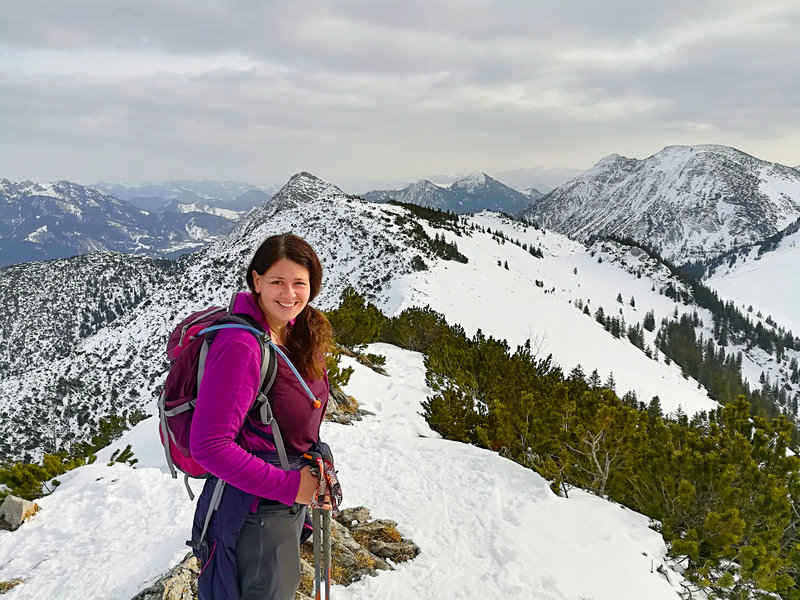I love winter hiking in Germany. And I think you might too. That’s why I’ve shared the best winter hikes, no matter what your fitness level and a cool way to get down sone (hint: it involves a sled 😉
Yes, I understand that you might have your concerns: Isn’t it cold? Aren’t you worried about getting lost? What about avalanches?
But I hope to convince you that there is a winter hike suitable for everyone and that you might actually enjoy it when you have the right winter hiking gear.
Types of Winter Hiking in Germany
Guided Winter Hikes
Guided winter hikes are a good introduction to winter hiking and are virtually worry-free. By choosing a winter hike organized by a local tourism board or other reputable company, a knowledgeable guide will lead your hike so you won’t have to worry about getting lost or about avalanches.
The last thing a tourist board wants is people getting caught in an avalanche. Just dress warm, layer your clothing, bring water and some snacks, and you’re all set.
Winter Hiking Tip: Garmisch-Partenkirchen Tourist Board offers free guided winter hikes from January – March.
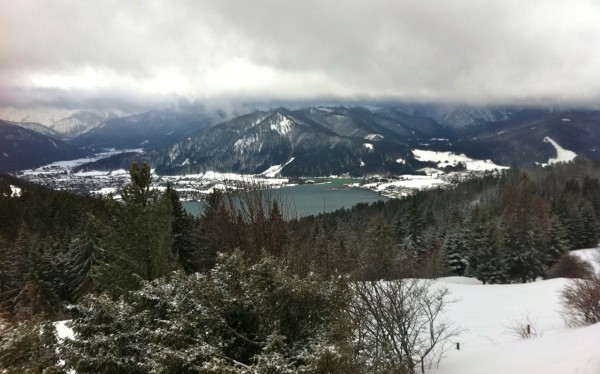
Winter Hiking on Maintained Trails
This is a step up from a guided winter hike since you will be on your own, without a guide, but there will be a path and signs. Besides choosing a hiking trail that looks interesting, you will also want to choose one suited to your ability, so note the distance, elevation gain, time and difficulty level listed for each hike. The added bonus is that you’re on your own time schedule so you can go as fast or as slow as you would like, stopping for as many photo opps to your heart’s content. I’m a big fan of these.
Winter Hiking Tip: You can check with the local tourist office or refer to the interactive maps available for Garmisch-Partenkirchen and Der Tegernsee or Der Bayerische Wald (Bavarian Forest – not in the German Alps, but still a fantastic place for winter hiking).
Easy Winter Hikes
For easy hikes, suitable for the entire family I recommend:
- the spectacular Partnachklamm in Garmisch-Partenkirchen, a gorge hike with options to extend into a more difficult hike,
- the Hoher Kranzberg, a small little mountain where a panoramic mountain theatre awaits you!
Steep Winter Hikes
For steeper, but still easy to follow hikes:
- the Waldberg near the Tegernsee, in which you can make a descent by Tobogganing on Germany’s Longest Toboggan Run,
- Lenngrieser Hütte (where you can spend the night) and continue on up to the Seekarkreuz (mountain peak),
- hike up the Jochberg (accessible all year long), which offers great views over the Walchensee, one of the deepest lakes in Bavaria.
- head to Wilder Kaiser. Although it’s in Austria and not in Germany, it’s just over 100 km from Munich so still reasonably close.
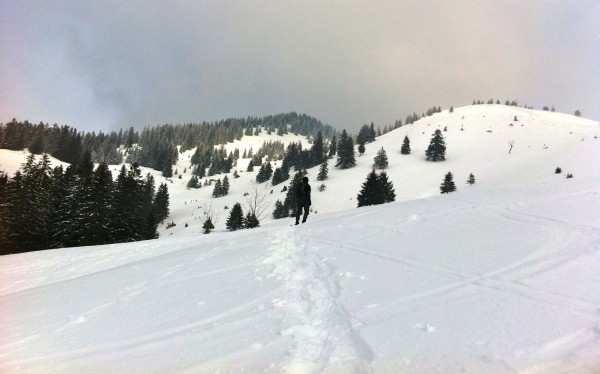
Winter Hiking on Unmaintained Trails
This is the most adventurous of the hiking options. The only trail will be the one created by you so snowshoes will come in handy. As a result, this is usually the best workout since hiking in the knee or even sometimes thigh-deep snow is hard, slow going. I usually choose unmaintained trails that have signs, but often signs can be hard to spot in winter:
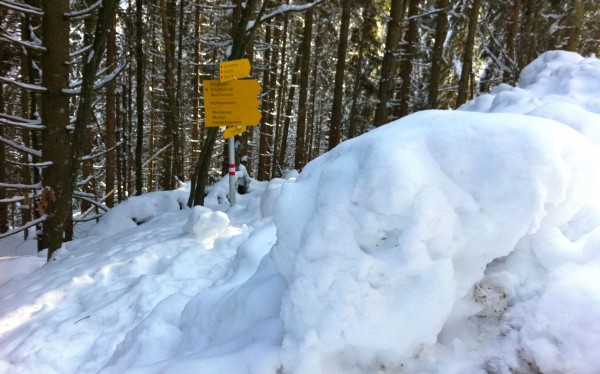
And huts are often closed:
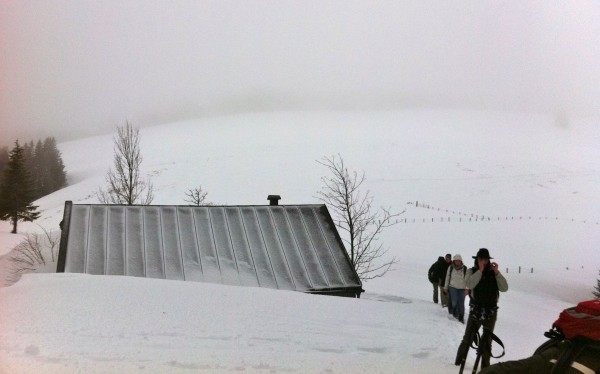
So if you’re looking for a winter trail with a hut, check to see if it’s open before you go. A good map is also necessary and a compass and knowing how to use it. If it’s your first time hiking on an unmaintained trail, it’s a good option to start with a shorter trail or one in which you can see your destination, such as hiking to the top of a small mountain.
The good thing about hiking on unmaintained trails is that you decide how steep you want the trail to be. Straight up, or lots of zig-zags, the choice is up to you, so no complaining about how hard it is!
Your sleek, toned legs will thank you later – once they stop burning. Note: I’ve done a lot of these but haven’t had the chance to write about them. Check back for updates!
Winter Hiking Tip: Always check with the local tourist office on conditions before heading out on an unmaintained trail, since avalanches may be a concern.
